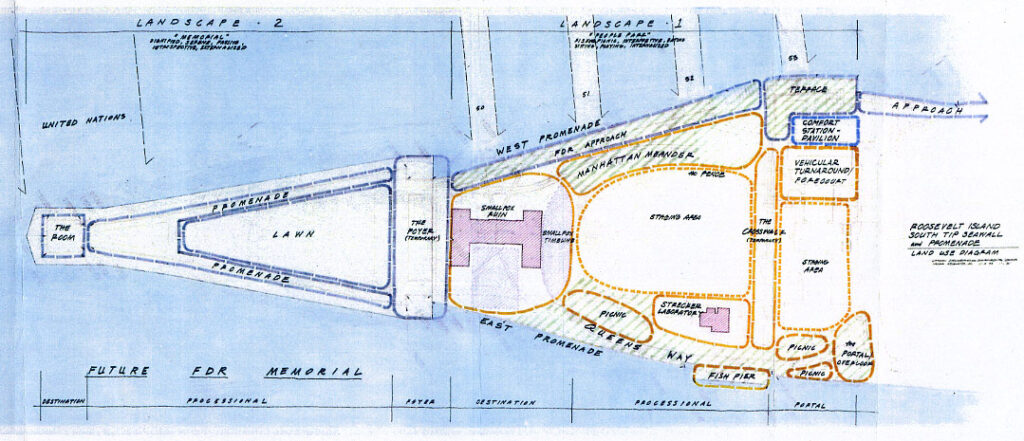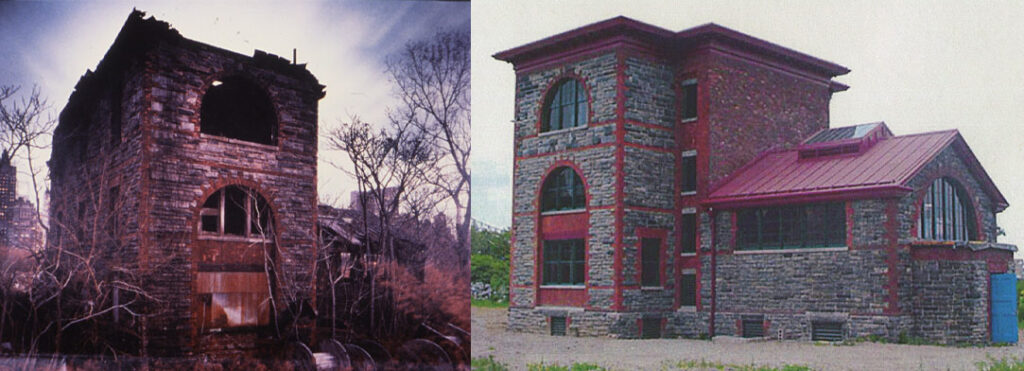Project: Roosevelt Island Operating Corporation

“Preservation, Master Planning”

In what was initially a 2-mile seawall engineering project, Ms. Russo, as Director of Planning and Development for the Roosevelt Island Operating Corporation, was able to leverage the community outreach, interagency coordination, and technical data to generate several landmarks and open space projects on this 11-acre site.
Many stakeholders were involved in this site including on-island residents, off-island private view holders from the Sutton Area community to the United Nations, official oversight agencies as well as the larger New York design communities for the three landmark ruins, the MTA with their subway line passing under the site, a private foundation, and the estates of Louis Kahn interested in the yet-to-be-realized FDR Memorial. Much of this work helped pioneer the role of ruins in the New York City urban fabric.
Projects realized at Southpoint, creating win/win situations and unique design solutions include the demolition of the landmark City Hospital with a unique asbestos abatement to allow safe site access and potential space for a revenue-generating structure; rehabilitation of landmark Strecker Lab as a Transit Authority Substation (2002 Landmarks Conservancy Award winner); stabilization of the Smallpox Hospital and Illumination with funding from Beekman Area residents (also awarded an ISTEA Grant for illumination);, and shaping of the Southpoint plinth according to Louis Kahn’s FDR Memorial design, to allow public access and a better understanding of this unique and powerful design.

“Participatory Design & Consensus Building”

Ms. Russo, as Director of Planning and Development for the Roosevelt Island Operating Corporation, spearheaded the initial Implementation Plan for this new 15-acre park, designed by Lee Weintraub. The plan was conceived with a large community task force. Ms. Russo defined a process for the community to articulate and prioritize the park elements to fit their desired 35 acres of the program within the 15-acre reality — balancing active, passive, and 200 semi-public community gardens.
Time pressure to relocate park uses from another housing development site, multiple funding sources, and limited resources requiring phasing all complicated the design effort. The final design resolution required intense negotiation with NYC’s DEP Third Water Tunnel project whose shaft lays both below and directly in the middle of the park site.
With continued community support from the Octagon Park Design Task Force, 8-acres of the park were realized, including securing several matching grants and the community’s donation of well over $200,000 in labor.


